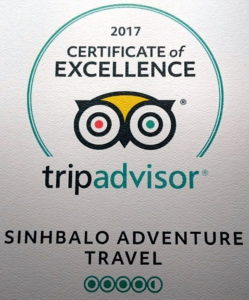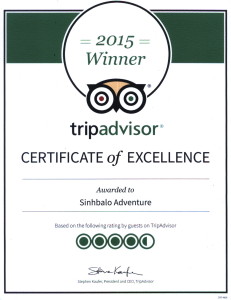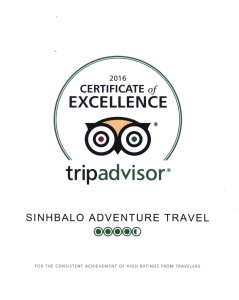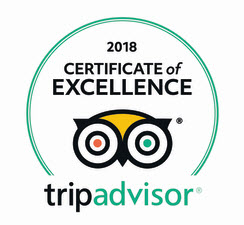Central Highlands: High spirit
Discover the Spell-Binding beauty of Vietnam’s central highlands.
The remote central highlands contain some of Vietnams best kept secrets, visitors willing to get off the beaten path will discover pristine lakes and rivers, vast swathes of old-growth jungle, and isolated ethnic minority villages.
Volcanic Red earth, dark green forests and glittering lakes make this one of Viet nams most beautiful and mysterious religions. Along with wild elephants, the area is home to monkeys, tigers, and the endangered Javanese Rhino.
The natives of Ban Don Village, 55km North-West of Buon Ma Thuot, have long been famous for their elephants-hunting skill, even today, villagers trap and train wild elephants, which are used for transportation and agricultural work and ridden in races and festivals.
1. Kon Tum
Kon Tum is the northernmost of central highland with 550 meters above sea-level. Three-quarters of the area are mountains and forests. Half of its population are minority groups. Kon tum has great potentiality for Eco-tourism because of tropical jungle, bio-diversity, the flora and fauna of Chu Mom Ray and Ngoc Linh natural reserves, and the Rong houses (Communal houses) in every hill tribe village.
Paying a visit to Kon tum can you see the imposing NgokLung waterfalls, the gentle and dreamy Poco river, experience how to cross rattan suspension bridges to villages. A great opportunity to discover the buffalo-stabbing festival with sounds of gongs and traditional musical instruments which symbolize for Bahnar, Sedang, Rongao and Jarai minority groups.
Besides, Kon Tum has been well-known for great historical relics, including Kon Tum and Dakglei prisons, the Dakto former battlefield, Tumorong, Charlie hill and the legendary HCM trail.
Hassle-free with fresh air, beautiful wooden church and seminary, primitive Bahnar villages in town which makes Kon Tum become a new destination for all travelers
2. Plei Ku
The one thing worth seeing in Plei ku is the Jarai and Bahnar tribes that live close by. The Jarai guild houses on stilts with a small hut out the front to keep their rice. The Bahnar also build their houses off the ground on stilts and have large balconies to work on. They have a community building called a Rong House where the elders meet for ceremonies and festivals. Inside they keep gongs, wine, drums and all the precious ceremonial artefacts. Shaman also use this large building for spiritual rituals such as the prayer for rain. The Rong House can only be entered by men.
3. Buon Ma Thuot
The Ede tribe (or Rhade) make the trip to Buon Ma Thuot worthwhile. The tribe is primarily matriarchy. The women own the property and after marriage the man must move in with the womans family whose house is extended to accommodate them. The houses of the Ede tribes are long (up to 30 m) and thin (4 m). Each time there is a wedding in the family, the houses is extended like carriages of a train. Each section can be closed off and has its own door and kitchen. The houses are also on stilts and under the house they store wood, food and even livestock.
At Lak Lake -50 km south of Buon Ma Thuot, you will enjoy elephant riding, overnight on stilt house of the Mnong tribe, drink their traditional wines and , listen to their mighty music.
4. Da Lat
Known as the Vietnamese “City of Love” because of its romantic landscape of mountains, pine forests, lakes and waterfalls, it becomes a favorite venue for honeymooners, 300 km north of HCM city at an altitude of 1,500 meters, it enjoys a significantly cooler climate than the tropical low lands.
Getting there & away:
Da Lat is about 300 km north of Saigon. Take 6 hours by bus following highway 20. From Da Lat you can take highway 27 connect to Buon Ma Thuot, crossing through the beautiful tropical forest with several mountain passes and hill tribes villages. It takes you 8 hours from Da Lat to Buon Ma Thuot, but most of travellers break the trip in Lak lake, stay overnight on stilt house of the Mnong tribe, riding elephant or enjoy the gong musics of the local tribe.
Plei ku and Kon tum can be accessed from Buon Ma Thuot (highway 14) or QuiNhon (highway 19). Kon tum is the most primitive town in Central highland. If you have short time. A trip from Sai gon to Da Lat, down to Nha Trang beach for few days, then continue highway 1 up north to Qui Nhon, turn left to Plei ku and Kon Tum for few more days. From Kon Tum you can take an adventure trip on Ho Chi Minh trail to Phuoc Son and Da Nang or coming down the jungle to Quang Ngai town on highway 1.
5. Cat Tien national park
Located in 3 provinces: Dong Nai, Lam Dong and Binh Phuoc. Cat Tien national park covers an area of 71,920 ha, situated 150km of Ho Chi Minh city. With its bio-diversity, and abundant natural resources, Cat Tien park has become one of the largest national park in Vietnam.
Flora:
There are approximately 75 orders, 162 families, and 1,610 species. Cat Tien park is mainly dominated by the species such as Dipterocarpaceae, Fabaceae, particularly Afzelia xylocarpa, Dalbergia bariensis etc….
The vegetation types in the park include: evergreen forests, semi deciduous forests, wood and bamboo forests and wetlands.
Fauna:
Cat Tien park includes 105 mammal species, 348 bird species, 133 freshwater fish species, 79 reptile species, 41 amphibian species, 439 butterflies species and thousands of other insect species.
There are 51 rare and endangered species in Cat Tien registered in Vietnam Data Red Book.
The Java Rhinoceros is one of the most critically endangered animals in the world. There are only two small populations: one in Ujung Kulon (Java, Indonesia) and the other in Cat Tien park where 7 to 8 individuals exist. Some other rare species which are also at risk of extinction such as: Siamese Crocodile, Orange-necked partridge, Elephant, Indo-Chinese Tiger, Gaur etc….
With total length of 90km of DongNai river bordering the park, many natural rapids, a complicated network of wetlands, and tropical rain forests, Cat Tien National Park is composed of many wonderful landscapes and magnificent sceneries.
Some more details at http://cattiennationalpark.com/







